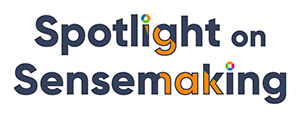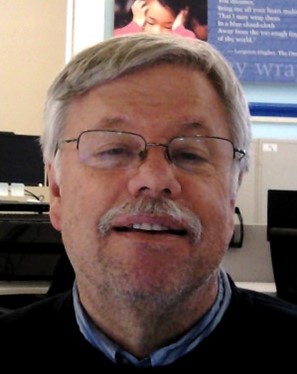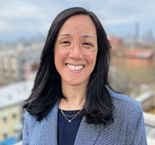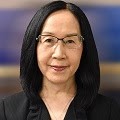Spotlight on Sensemaking
New York City Department of Education Takes a Systems Approach to Science Education With Multilingual Learners
By Greg Borman, Theresa Ocol, and Okhee Lee
Posted on 2022-06-10

Disclaimer: The views expressed in this blog post are those of the author(s) and do not necessarily reflect the official position of the National Science Teaching Association (NSTA).

Historically, research, policy, and practice did not work well together as they pursued different, sometimes even conflicting, goals. A Framework for K-12 Science Education (National Research Council 2012) and the Next Generation Science Standards (NGSS Lead States 2013) called for consensus among research, policy, and practice in science education. Today, the field of science education is “speaking the same language” to achieve common goals. This consensus in the field of science education is extended to the field of language education in the report English Learners in STEM Subjects (National Academies of Sciences, Engineering, and Medicine [NASEM] 2018). NASEM’s (2021) latest report Call to Action for Science Education continues to forge the consensus. Taking a systems approach, the Call to Action for Science Education report starts from the vantage point of education policy at the national, state, and district levels.
The systems approach taken by the New York City Department of Education (NYC DOE) is enabling science and language educators to take action in creating better, more equitable science education for all students, including multilingual learners who make up over 13% of NYC’s preK-12 student population. Representing the largest school district in the nation, the NYC DOE’s systems approach is grounded in collaboration across (1) science education and language education, (2) K-12 education and higher education, and (3) multiple levels of the education system.
First, a systems approach promotes collaboration across science education and language education with multilingual learners in mutually supportive ways. Traditional approaches in science education focused on learning canonical knowledge of science disciplines, but contemporary approaches place student agency at the center and focus on making sense of phenomena and problems as scientists and engineers do in their professional work (i.e., what knowledge does; knowledge-in-use). In addition, traditional approaches often alienated minoritized students from science learning and careers, but contemporary approaches engage all students: “all standards, all students” (Lee, Miller, & Januszyk 2015). Similarly, traditional approaches in language education focused on vocabulary and grammar, but contemporary approaches place equity at the center and leverage students’ full repertoire of meaning-making resources in learning science (i.e., what language does; language-in-use).
Second, a systems approach promotes collaboration across K-12 education and higher education. For example, Okhee Lee, a member of the NGSS writing team and leader of the NGSS Diversity and Equity Team, and her team at New York University developed a year-long fifth-grade science curriculum with funding from the National Science Foundation. The Science And Integrated Language (SAIL) curriculum is aligned to the Framework and the NGSS with a focus on multilingual learners (https://www.nyusail.org/). Following years of development and field testing with teachers, this research-based curriculum was presented to NYC DOE science and language educations at district conferences and professional development institutes.
Finally, a systems approach promotes collaboration across multiple levels of the education system. At the New York State Education Department (NYSED), the Board of Regents approved in 2016 the New York State P-12 Science Learning Standards based on the Framework and the NGSS. Soon after, the NYSED leveraged the affordances of the SAIL curriculum to develop a series of webinars and briefs that support teacher implementation of the new science standards with all students, including multilingual learners (http://www.nysed.gov/bilingual-ed/integrating-science-and-language-all-students-focus-english-language-learners). At the NYC DOE, Greg Borman, Director of Science, and Theresa Ocol, Senior Director of Content Areas, continue to leverage the SAIL curriculum along with the webinars and briefs to implement teacher professional learning institutes, capacity building of instructional leaders, teacher recertification modules, and further development and field testing of the SAIL intervention consisting of the curriculum and teacher professional development.
The NYC DOE’s collaborative efforts support science and language educators across the state. Through our presentations and publications, our field tested and widely expanding resources are shared with the NYSED, various science and language education organizations, a language education journal, and open access sites to promote science learning of all students, including multilingual learners.
This blog presents a case of a systems approach to national, state, and district policies that integrates science and language for all students, with a focus on multilingual learners. Our collaboration addresses NASEM’s (2021) Call to Action for Science Education and enables educators to take action in creating better, more equitable science education for all students.
References
Lee, O., E. Miller, and R. Januszyk (Eds.). 2015. NGSS for all students. Arlington, VA: National Science Teachers Association.
National Academies of Sciences, Engineering, and Medicine. 2018. English learners in STEM subjects: Transforming classrooms, schools, and lives. Washington, DC: National Academies Press.
National Academies of Sciences, Engineering, and Medicine (NASEM). 2021. Call to action for science education: Building opportunity for the future. Washington, DC: National Academies Press.
National Research Council. 2012. A framework for K-12 science education: Practices, crosscutting concepts, and core ideas. Washington, DC: National Academies Press.
Next Generation Science Standards Lead States. 2013. Next Generation Science Standards: For states, by states. Washington, DC: National Academies Press.
Authors' Note: The unit featured in this blog “What Happens to Our Garbage?” is part of an NSTA playlist to support contemporary science education: https://www.nsta.org/playlist/what-happens-our-garbage

Greg Borman is the Director of Science for the New York City Department of Education (NYC DOE). He helped develop the New York State Strategic Plan for Science and is a member of the New York State Science Content Advisory Panel. His NYC DOE team is supporting the implementation of the New York State P-12 Science Learning Standards through professional learning, curriculum evaluation, and collaboration with higher education and informal science education institutions. Formerly, he was a secondary school science teacher, staff developer, and administrator. He also served on the faculty of the City College of New York, teaching science education courses and supporting and supervising preservice and inservice teachers.

Theresa Ocol is the Senior Director of Content Areas with the Division of Multilingual Learners at the New York City Department of Education (NYC DOE). She focuses on designing, planning, and delivering professional learning opportunities and resources for science and English as a New Language educators from grades K-12. Theresa has worked in the NYC DOE for the last 17 years. Before joining the NYC DOE, she served as a high school biology teacher and as an assistant principal of supervision at a high school with one of the largest populations of English Language Learners and Multilingual Learners (ELLs/MLs) in New York City. From her school-based experiences with ELLs/MLs and her work with the research community, Theresa embraces the notion that all ELLs/MLs bring assets to their science learning.

Okhee Lee is a professor in the Steinhardt School of Culture, Education, and Human Development at New York University. She was a member of the NGSS writing team and served as leader for the NGSS Diversity and Equity Team. She was also a member of the Steering Committee for the Understanding Language Initiative at Stanford University. Her research involves integrating science, language, and computational thinking, with a focus on multilingual learners. Her latest work focuses on justice-centered STEM education to address pressing societal challenges using the case of the COVID-19 pandemic.
Note: This article is part of a new blog series, Spotlight on Sensemaking, which features various schools, districts, states, and partners around the country and their innovative approaches to incorporating sensemaking in the classroom.
The mission of NSTA is to transform science education to benefit all through professional learning, partnerships, and advocacy.


